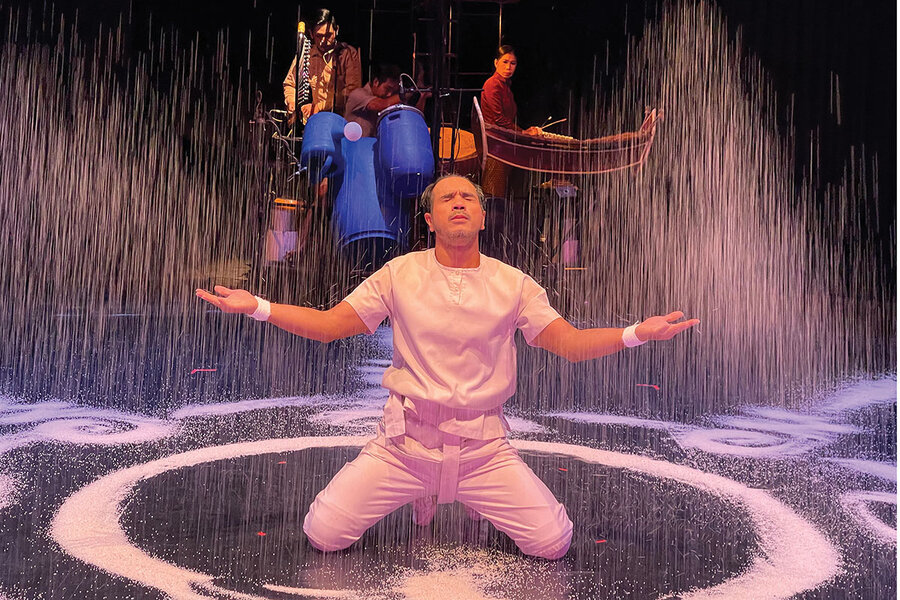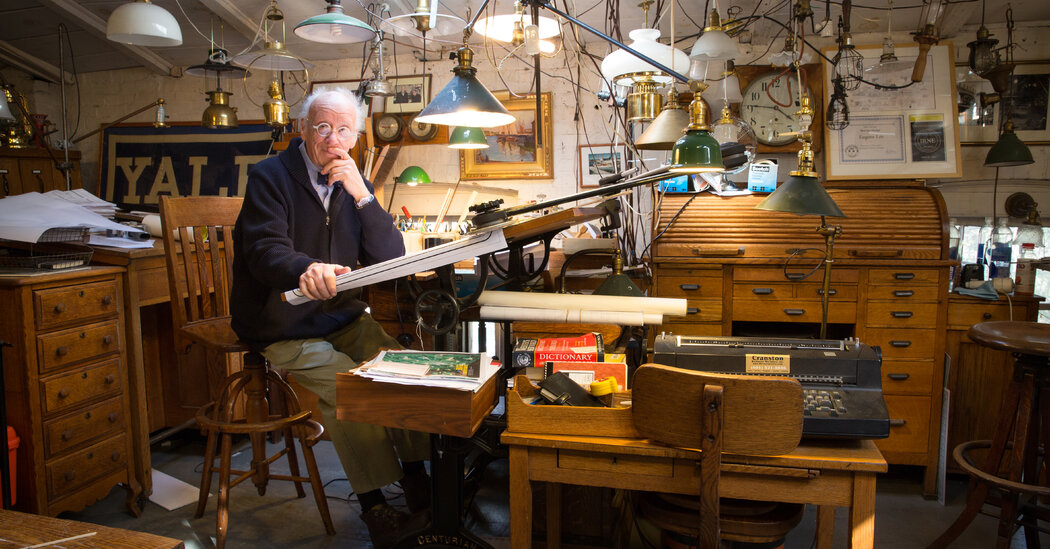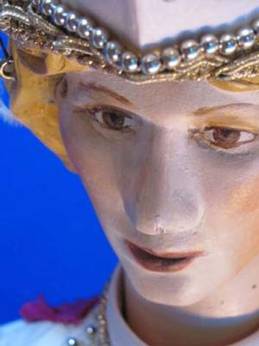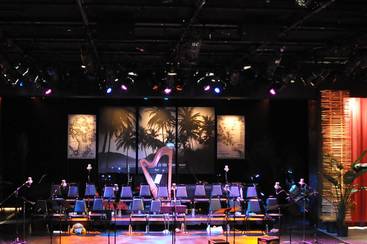Art as a tool for healing? Cambodian circus fosters joy and confidence.
[ad_1]
All shows at Siem Reap’s Phare Circus are rooted in Cambodian culture, from a juggling act that pokes fun at tourists to acrobatic routines inspired by local mythology to dances that explore wartime trauma. Watching the performers dance, paint, and twist into pretzels, it’s difficult to imagine that these confident young men and women come from impoverished or troubled families.
Celebrating its 10th anniversary on Feb. 8, Phare Circus simultaneously provides young Cambodians with a livelihood and showcases the talents of students at Phare Ponleu Selpak, a not-for-profit arts school located in Battambang, Cambodia.
Why We Wrote This
Art can be a tool for radical transformation, joy, and healing. In Cambodia, a circus employing disadvantaged youth is helping break the cycle of poverty and renew arts that were nearly wiped out by the Khmer Rouge regime.
The school was set up in 1994 by French art teacher Véronique Decrop and a small group of Cambodian refugees who returned home after the brutal Khmer Rouge regime ended in 1979. Apart from giving kids a safe space away from crowded homes and dangerous streets, the school aims to revive arts that were decimated during the Cambodian genocide.
Preserving the arts “gives young Cambodians something to hold on to from their past,” says musician and genocide survivor Arn Chorn-Pond, who founded an organization that provides arts education scholarships. “It also gives them an identity, it gives them confidence, it gives them the voice to tell their own stories to the world.”
A short drive away from the famed Angkor Wat temple ruins in Siem Reap, Cambodia, another spectacle has been quietly attracting visitors for years. Every evening, under the big top at the Phare Circus, audiences watch mesmerized as acrobats and artists jump and somersault, dance and paint, execute midair flips and twist into pretzels.
Forgetting the discomfort of the hard wood seats, the viewers cheer and clap at the entertainers, who work in perfect harmony as a team.
Watching them smile under the spotlight, it is difficult to imagine that these confident young men and women come from impoverished or troubled families. Celebrating its 10th anniversary on Feb. 8, Phare Circus simultaneously provides young Cambodians with a livelihood and showcases the talents of students at Phare Ponleu Selpak, a not-for-profit arts school located in Battambang, Cambodia.
Why We Wrote This
Art can be a tool for radical transformation, joy, and healing. In Cambodia, a circus employing disadvantaged youth is helping break the cycle of poverty and renew arts that were nearly wiped out by the Khmer Rouge regime.
Phare Ponleu Selpak – meaning “The Brightness of the Arts” – was set up in 1994 by French art teacher Véronique Decrop, who practiced art therapy at refugee camps, and a small group of refugees who returned home from Thailand after the brutal Khmer Rouge regime ended in 1979. Apart from giving children a safe space away from crowded homes and dangerous streets, the school aims to revive arts that were decimated during the Cambodian genocide. Their restoration has brought healing and joy to performers and audiences alike.
“The Khmer Rouge left us with zero – 1,000 years of history of the Cambodian empire reduced to ash. More than 90{abdbf1aafee1705a3934b904a34e25e9fc41880f65382909ec0927360d773d22} of the masters were killed or just disappeared,” says musician and genocide survivor Arn Chorn-Pond, who founded Cambodian Living Arts, an organization that provides arts education scholarships.
Preserving the arts “gives young Cambodians something to hold on to from their past,” he says. “It also gives them an identity; it gives them confidence; it gives them the voice to tell their own stories to the world.”
A place of healing
Tor Vutha, one of the co-founders, says the school was their way of paying it forward, or as he puts it, “transfer the knowledge from our heart to the community.” He says that the organization started small and evolved along with the needs of locals.
“Many children were suffering from war trauma and needed help,” he recalls. “We had received art in the refugee camp and embodied its benefits, so we wanted to share the same with the children and youth to help them overcome their traumas and help the community rebuild.”
In fact, Craig Dodge, director of sales and marketing at Phare Circus, says that it wasn’t meant to be a vocational school at all. “At the very core, it’s art therapy, and about healing and expressing yourself,” he explains. “And although it started with the art classes, they found that young kids can’t always sit still, so then they added more active things like drama and dance.”
Today, the school offers training in graphic design, animation, music, and other arts, and students are free to explore their interests. It takes in more than 1,000 children annually, many of whom have gone on to perform at Phare Circus.
Raising the big top
The idea for the formal circus – students and teachers had always been putting on shows at the Battambang campus – came when the founders realized they needed a dedicated space to showcase the students’ hard work.
“They knew that running a school is quite different from running a business, so they decided to do it as a separate entity,” Mr. Dodge explains. And so Phare Performing Social Enterprise came into being, with the profits going back into the same business – in this case, the salaries of the artists and upkeep of the circus.
Mr. Dodge, who has been with Phare Circus from the beginning, remembers it starting back in 2013 with an “outdoor stage, plastic chairs, rain.” It has since come a long way.
In addition to the main circus tent, the Phare campus in Siem Reap hosts local musicians, food stalls, and a small crafts shop. Families are welcomed at the main gate by jugglers and acrobats, who give them a taste of what awaits inside. Phare Circus has produced 23 different shows over the past decade, with more than 5,000 performances in front of over a million spectators, including foreign tours in countries such as the United States, Australia, Japan, France, Italy, and Singapore.
All shows are strongly rooted in Cambodian culture, from dances depicting rural life, to a juggling act that pokes fun at tourists, to acrobatic routines inspired by Cambodian mythology and folklore. One show, “White Gold,” explores the significance of rice for Cambodian people. Others deal with healing after war and draw from the founders’ memories of the Khmer Rouge era.
Wendell Johnson, an American retiree in Siem Reap, has been a regular visitor to Phare Circus since its first year of production. He says what keeps him coming back are “the smiles, the incredible athletic abilities, and the storylines” that vividly connect Cambodia’s past to the present. He also praises the artists’ grit and determination, noting that he’s seen performers immediately redo failed stunts and succeed.
Transforming lives
The Phare Circus performers train for several years at the school, building both their skills and self-esteem, before they’re eligible to work at the circus. Almost all come from large families with limited resources, and being at school keeps them away from hunger, drugs, abuse, and trafficking. The circus is also an opportunity to travel the world, and pays well.
The steady work has been particularly transformative for the handful of female performers, whom young girls back in Battambang look up to as inspirations.
Srey Chanrachana started training at Phare Ponleu Selpak in 2007 at the age of 11. Back then, her family of five depended on the irregular income of her taxi driver father.
“We used to live in a very small house where we would all sleep together, and our roof would always leak whenever there was rain,” she recalls. Now they live in a larger, more comfortable home.
With her earnings, she has also enrolled in English and computer classes to further her education, and she says working at the circus has made her more confident.
Like everything else, the Phare Circus took a hit during the pandemic, with the country closed to tourists and the circus shut for nearly two years, but is now back in action with regular, packed shows. Mr. Johnson and other fans welcome its return.
“While I have seen some changes in the shows as they add a new stunt or two, what I have not seen change is the enthusiasm, and the sense of pride and joy among the artists,” he says.
[ad_2]
Source link















